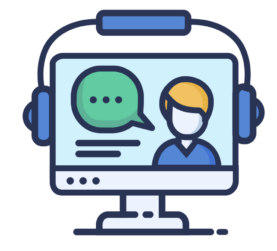Jen Carey is LIVE blogging for us from the EdTechTeacher iPad Summit USA. You can also find these posts on her site – indianajen.com.
Day 2 Concurrent Session with Douglas Kiang – The Curated Classroom: Finding and Sharing Great Online Content with iTunes U
I am a big fan of iTunes U, so I was thrilled to learn about Douglas Kiang’s presentation on creating and curating content using iTunes U in your classroom. He started out by telling us that teachers are storytellers, curators, and publishers.
Storytelling
Being creative, a designer, is what is key in this new world. Storytellers, or concept bearers, are the purveyors of information in not only the modern world, but also throughout history. The problem, however, with the written word is that our stories become “static.” We cannot change them as we evolve. The internet age has changed that drastically. Our stories are becoming dynamic; they have the ability to change. At the same time, we have an expansive audience. Bill Rankin, Ph.D. rather provocatively addressed the issue of the death of the written word:
Curation
Douglas returns to the topic of curation, as it is the core focus of this discussion. A curator is not a master artist or scientist. A curator is someone that shares knowledge and groups information in a way that can best convey knowledge. A key element of curation within education is personalization. We can create individual exhibits for our audience (students). We know our students well enough to create the best play list of material that will work for them, and ideally, we will ultimately provide them with the skills they need to curate for themselves.
iTunes U itself is simply a collection of multimedia artifacts (video, audio, and/or PDFs), and everything within iTunes U is FREE. Some of the top academic institutions (Harvard, MIT, Stanford, etc.) are avid contributors. Douglas demonstrates different ways that you can use already existing content in your courses simply by using the links in your course assignments or assigning students to find content.
iTunes U
 Apple has recently released the iTunes U App, so individuals are able to browse and download content via the iTunes Application. However, to get the full experience and content of iTunes U, you must download the iOS App. If you create an iTunes U course, you can then add PDFs, links, audio, video, textbooks from the iBooks Store, and other content from within iTunes U. Douglas does recommend, however, that when building a course, be cognizant of what does and does not require a wireless connection.
Apple has recently released the iTunes U App, so individuals are able to browse and download content via the iTunes Application. However, to get the full experience and content of iTunes U, you must download the iOS App. If you create an iTunes U course, you can then add PDFs, links, audio, video, textbooks from the iBooks Store, and other content from within iTunes U. Douglas does recommend, however, that when building a course, be cognizant of what does and does not require a wireless connection.
What can/should you do within the iTunes U course?
- Deep link
- Upload original content
- Duplicate your course (you cannot edit once its published)
- Send in-session announcements (only works on an iOS device)
- Preview your course on an iOS device while you are building it
What is not supported within the iTunes U course:
- Track individual students’ progress
- Give synchronous quizzes
- Have students turn material in
- Create a discussion forum
- Have more than one (official) course author
Douglas notes that while iTunes U may have limitations, it is the easiest and most simple platform for producing and disseminating high quality content. If you would like to see a sample of K-12 course content created and published on iTunes U, see the list that he has on his content site. He strongly recommends taking a look at what other people have completed before going forward and drafting your own iTunes U course.
Douglas then walks us through Course Manager (Apple Guide). He points out that while he loves iTunes U, he does not use it on a day-to-day basis. He feels that education requires true face-to-face interaction. Right now, this is effective for small chunks of information or conducting workshops.
You can view Doug’s presentation materials – as well as those from other presenters – on the iPad Summit web site.


